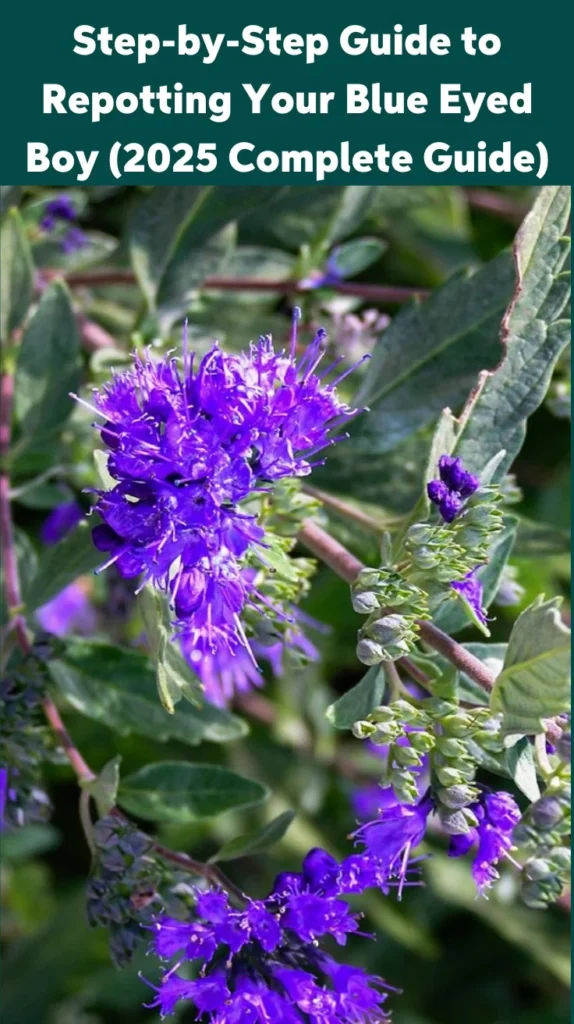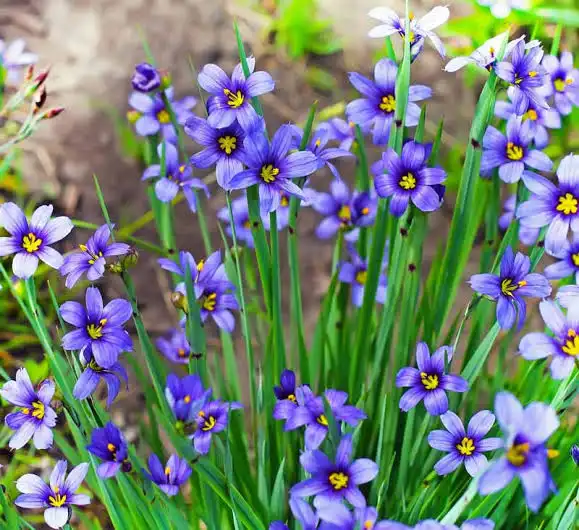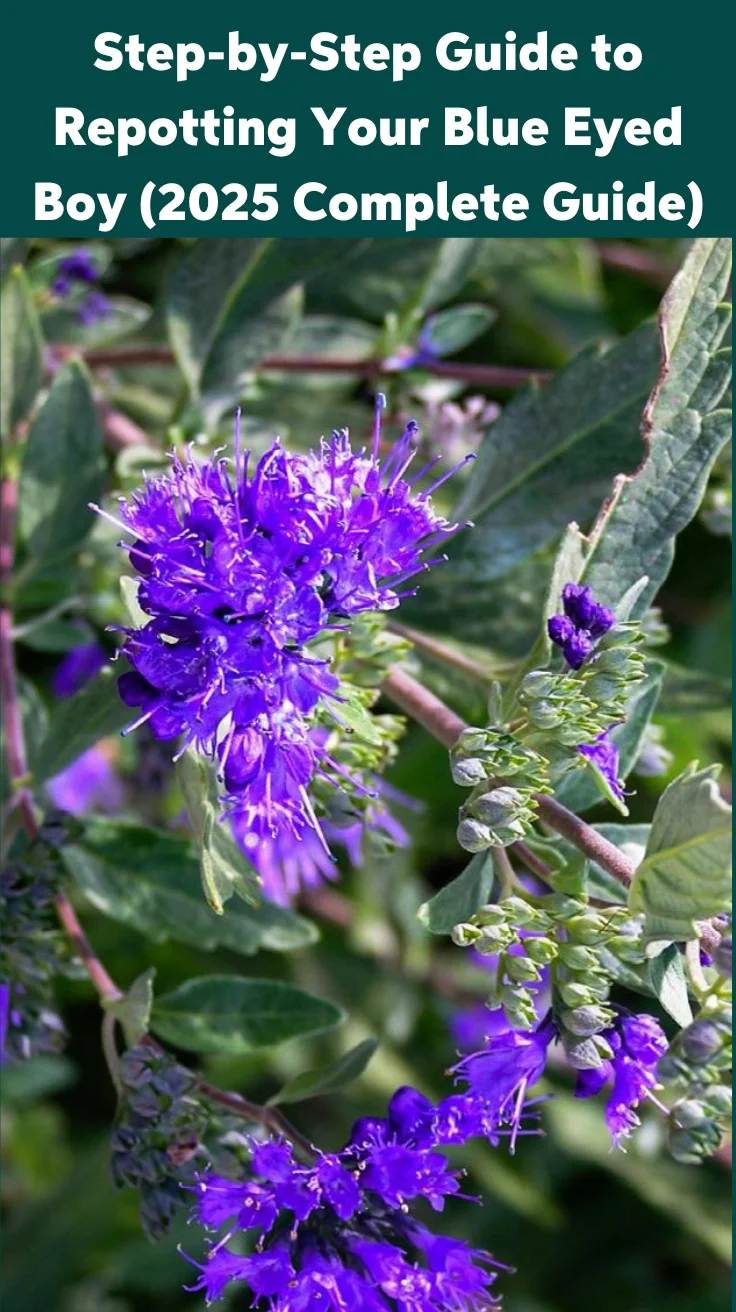Learn how to repot your Blue Eyed Boy with this step-by-step guide! From choosing the right pot to caring for your plant afterward, I’ll share my tips and personal experience to help your succulent thrive. Let’s get started!

Hi there! Ashley Scott here from USAGardenHub.com. I want to share a simple story about one of my favorite plants: Sisyrinchium angustifolium ‘Blue Eyed Boy.’
A few years ago, I was at my local garden center looking for a plant that was easy to care for and beautiful. I spotted ‘Blue Eyed Boy’ with its bright blue flowers and yellow centers. I knew I had to take it home. Since then, it has brought joy to my garden every year.
Let me tell you why this plant is so special and how you can grow it in your own garden.
What Makes ‘Blue Eyed Boy’ Special?

This plant grows only about 8-12 inches tall, which is perfect for small spaces. The star-shaped blue flowers bloom from late spring to early summer. One morning, I walked outside with my coffee, and the flowers were dancing in the breeze. It was such a cheerful sight.
The plant also stays neat with grassy, upright leaves. It’s simple but adds a nice touch to any garden.
Growing ‘Blue Eyed Boy’ in Your Garden
Here are some tips I’ve learned from growing ‘Blue Eyed Boy’:
- Sunlight: It loves full sun but can handle a bit of shade in the afternoon.
- Soil: Well-draining soil is important. I made the mistake of planting it in clay soil once, and it struggled. Adding compost fixed the problem.
- Watering: I used to water it too much. Now I keep the soil moist but not soggy.
- Temperature: It does well in USDA zones 4 through 9. In my zone 7 garden, it handles hot summers and chilly winters.
- Spacing: Plant them about 6-8 inches apart so they have room to grow.
How I Planted ‘Blue Eyed Boy’
This is how I planted mine:
- Pick the Spot: I chose a sunny area near my garden path.
- Prepare the Soil: I dug up the soil about 8 inches deep and mixed in compost.
- Plant: I placed the plant in a hole slightly bigger than its root ball and made sure it was level with the soil.
- Backfill and Water: I filled in the hole and watered it well.
- Mulch: Adding mulch helped keep the soil moist and free from weeds.
Taking Care of ‘Blue Eyed Boy’ Throughout the Year
I follow these simple steps to keep my plant happy:
- Spring: Remove any dead leaves and add a bit of fertilizer.
- Summer: Deadhead the flowers (cut off old ones) to keep it blooming longer.
- Fall: Cut the plant back to about 2 inches above the ground.
- Winter: In very cold years, I add mulch to protect the roots.
Fun Ways to Use ‘Blue Eyed Boy’
Here are some creative ways I’ve used this plant in my garden:
- Garden Borders: Its small size makes it perfect for the front of garden beds.
- Rock Gardens: It adds a pop of color and thrives in well-drained soil.
- Pollinator Gardens: Bees and butterflies love these flowers. I love sitting in the garden and watching them visit.
- Container Gardens: When I ran out of space in my garden, I planted it in a pot. It looked fantastic!
Best Companion Plants
I love pairing ‘Blue Eyed Boy’ with these plants:
- Coreopsis: Bright yellow flowers look amazing next to the blue blooms.
- Lavender: The purple flowers and nice smell complement ‘Blue Eyed Boy.’
- Sedums: Their thick leaves and late blooms add texture.
- Heuchera: Colorful leaves look beautiful with the neat shape of ‘Blue Eyed Boy.’
Common Problems and Simple Fixes
Here are a few issues I’ve faced and how I solved them:
- Yellow Leaves: I was overwatering. Letting the soil dry a bit fixed this.
- No Blooms: At first, I had it in too much shade. Moving it to a sunny spot helped.
- Pests: Sometimes aphids appear. A blast of water or insecticidal soap does the trick.
Why ‘Blue Eyed Boy’ Is a Must-Have
After years of growing this plant, I can’t imagine my garden without it. Here’s why I think you’ll love it too:
- Low Maintenance: It’s super easy to care for.
- Pollinator Friendly: Watching bees and butterflies enjoy it is heartwarming.
- Compact Size: It fits in small spaces and containers.
- Beautiful Blooms: The vibrant flowers brighten up the garden.
Final Thoughts
If you want a simple, beautiful, and easy-to-grow plant, Sisyrinchium angustifolium ‘Blue Eyed Boy’ is perfect. I hope my personal story inspires you to give it a try.
Thanks for visiting USAGardenHub.com. Happy planting!
Warmly,
Ashley Scott
USAGardenHub.com




